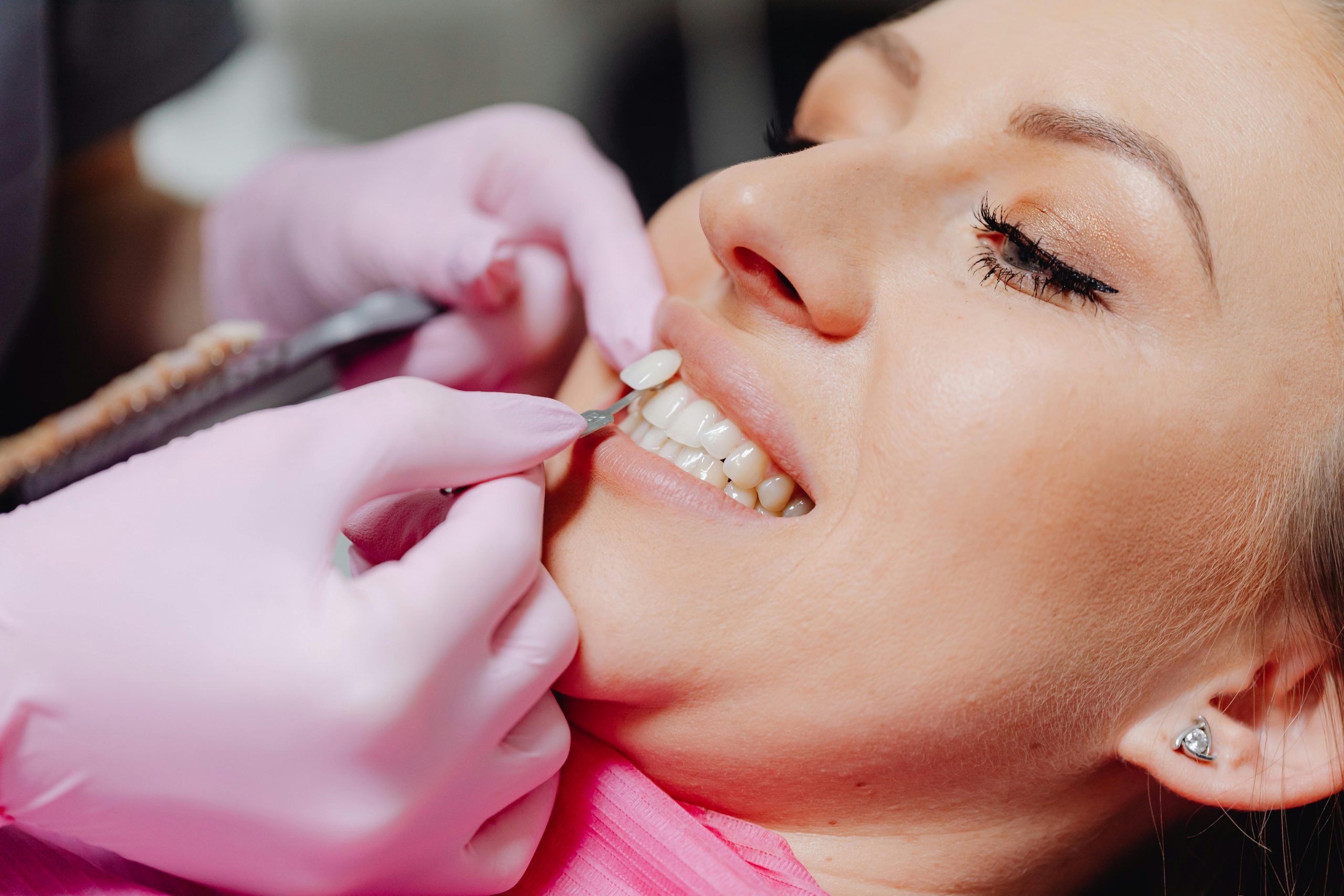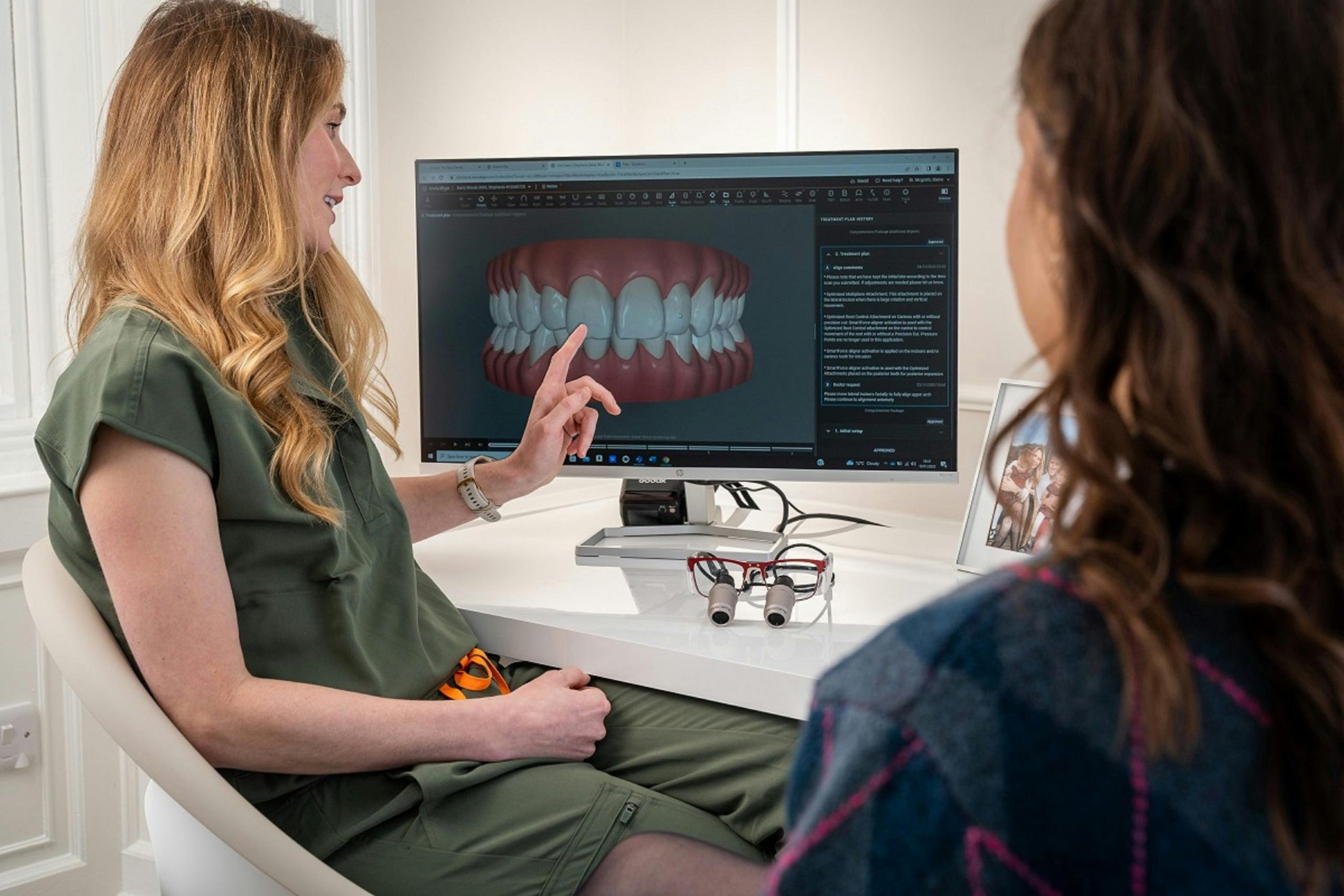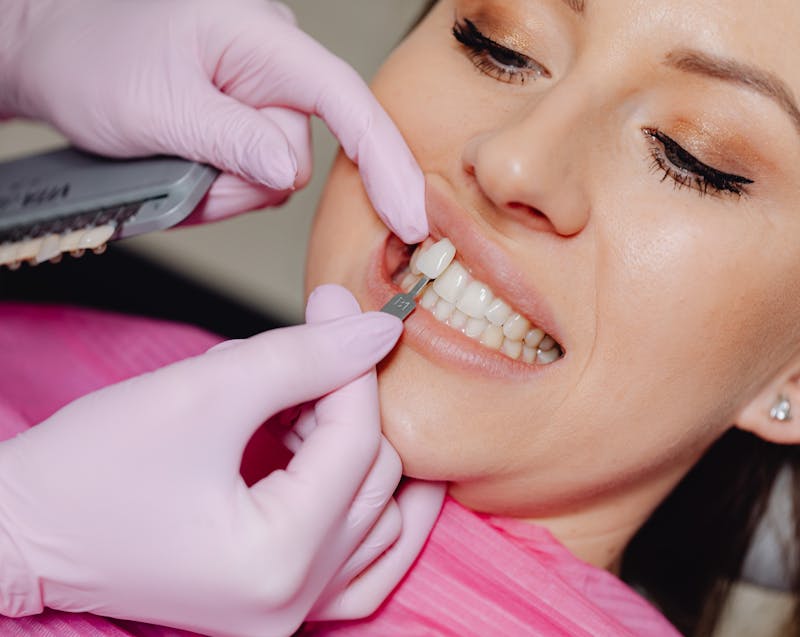
Thinking about upgrading your smile? Veneers are one of the most popular cosmetic dentistry treatments for a reason. They’re fast, effective, and can dramatically improve the look of your teeth without major surgery. But before diving in, it’s important to know the different types of veneers and what a cosmetic dentist can offer in terms of results, longevity, and overall care.
Let’s break it all down so you can walk into your consultation feeling confident and informed.
What Are Veneers, Exactly?
Veneers are thin, custom-designed shells—most often made of porcelain or composite resin—that bond securely to the front surface of your teeth. They are designed to enhance both appearance and strength, allowing patients to transform their smile without invasive dental surgery.
Unlike crowns, which cover the entire tooth, veneers only cover the visible front portion. This makes them a less aggressive cosmetic solution while still delivering dramatic results.
Veneers can be used to fix a variety of dental concerns, such as:
- Discolored or stained teeth that won’t respond to whitening treatments, including deep intrinsic stains from medications or fluorosis.
- Chipped or cracked teeth that need a cosmetic and functional upgrade.
- Slight misalignments or uneven spacing, where orthodontic treatment might be unnecessary.
- Irregularly shaped teeth that disrupt the harmony of your smile.
- Worn-down enamel caused by grinding (bruxism), acidic foods, or aging.
Think of veneers as a protective cosmetic enhancement: they don’t just hide imperfections, they also create a uniform, polished appearance. Unlike temporary fixes, they become a permanent part of your smile when properly cared for.
Why Choose Veneers Over Other Cosmetic Options?

In cosmetic dentistry, patients have many choices—teeth whitening, bonding, braces, crowns—but veneers consistently rank as one of the most effective all-in-one solutions.
Here’s why they’re a top choice:
- Quick Transformation – Instead of months with braces or multiple whitening sessions, veneers can provide a full smile makeover in just two to three appointments.
- Natural Look – High-quality veneers mimic the light-reflecting properties of natural enamel, ensuring they look indistinguishable from real teeth.
- Durability – With proper care, porcelain veneers can last 10–20 years, far outlasting bonding or whitening treatments.
- Minimal Invasiveness – Unlike crowns, veneers only require a small amount of enamel removal—or none at all with no-prep options—preserving more of your natural teeth.
While whitening only changes tooth color, and bonding is more prone to chipping, veneers combine aesthetic improvement with lasting strength, making them an excellent long-term investment.
What Are the Different Types of Veneers?
Not all veneers are created equal. They differ in material, preparation requirements, cost, and longevity, meaning the right choice depends on your specific dental needs and goals. Factors like your budget, natural tooth condition, and desired aesthetic play a big role in the decision. Here’s a closer, more comprehensive look at the four main types:
1. Porcelain Veneers
Porcelain veneers are widely considered the premium choice in cosmetic dentistry. They are custom-fabricated in a dental laboratory to perfectly fit your teeth and achieve a natural-looking, radiant smile. Because porcelain closely mimics the light-reflecting properties of natural enamel, it offers a lifelike, flawless finish.
Pros:
- Extremely durable – Can last 10–15+ years with proper care, making them a long-term investment.
- Highly aesthetic – They reflect light similarly to real enamel, creating a natural and vibrant appearance.
- Stain-resistant – Porcelain resists staining from coffee, tea, wine, and tobacco.
- Fully customizable – Shape, size, and color are tailored to match your facial features and smile goals.
Cons:
- Higher cost – One of the most expensive veneer options due to quality and customization.
- Irreversible – Requires removal of a thin layer of enamel, which cannot be restored.
- Multiple visits – The process involves consultation, tooth preparation, impressions, and final placement.
Who They’re For:
Patients who want a long-lasting, natural, and highly aesthetic solution and are comfortable with a slightly invasive procedure. Porcelain veneers are ideal for severe discoloration, chips, and misalignments that need a strong and permanent fix.
2. Composite Veneers
Composite veneers are made from a tooth-colored resin that the dentist applies and shapes directly on your teeth. Unlike porcelain, they don’t require lab work and can usually be completed in a single appointment. While they’re less durable than porcelain, they’re also more affordable.
Pros:
- Cost-effective – Less expensive than porcelain, making them budget-friendly.
- Same-day transformation – Can be applied and shaped in just one visit.
- Repairable – Chips or damage can often be repaired without replacing the entire veneer.
Cons:
- Shorter lifespan – Typically lasts 5–7 years with proper care.
- Stain-prone – Resin is more susceptible to discoloration from food, drinks, and smoking.
- Less natural-looking – While they can look good, they may lack the depth and translucency of porcelain.
Who They’re For:
Patients seeking an affordable and quick cosmetic upgrade, or those wanting to test the look of veneers before committing to porcelain.
3. No-Prep Veneers
No-prep veneers, including well-known brands like Lumineers, are ultra-thin porcelain veneers designed to fit over natural teeth with minimal or no enamel removal. This makes them far less invasive than traditional porcelain veneers.
Pros:
- Minimally invasive – Little to no drilling or anesthesia is needed.
- Reversible potential – Since little enamel is removed, they can sometimes be taken off.
- Fast placement – The process is quicker, requiring fewer dental visits.
Cons:
- Limited use – Not ideal for teeth with severe discoloration, damage, or misalignment.
- Less customization – May not offer as much design flexibility as traditional porcelain.
- Bulkiness risk – Because no enamel is removed, they can look or feel slightly thicker on some teeth.
Who They’re For:
Patients who want an upgrade with minimal tooth alteration and who have relatively healthy teeth that only need mild cosmetic improvements.
4. Removable Veneers (Snap-On Veneers)
Removable veneers, also known as snap-on veneers, are temporary, non-invasive devices that fit over your existing teeth like a dental retainer. They provide an instant cosmetic improvement but are not meant to be a permanent solution.
Pros:
- Non-invasive – No drilling, enamel removal, or permanent changes.
- Affordable – Costs significantly less than permanent veneers.
- Convenient – Great for special occasions or short-term use.
Cons:
- Temporary – Not designed for long-term wear or everyday use.
- Less natural – They don’t offer the same realistic appearance as porcelain.
- Comfort issues – Can feel bulky, and speech may be affected at first.
Who They’re For:
Patients looking for a temporary smile enhancement, a trial run before committing to permanent veneers, or an affordable way to cover cosmetic imperfections for specific events.
What Can a Cosmetic Dentist Offer Beyond Veneers?

While veneers are a powerful tool for transforming your smile, a skilled cosmetic dentist does far more than just place them. They take a comprehensive approach to ensure that every aspect of your treatment enhances your appearance, maintains oral health, and delivers long-lasting results.
1. Customized Smile Design
Every smile is unique, which is why cosmetic dentists don’t rely on a one-size-fits-all approach. Instead, they use advanced techniques and aesthetic principles to design veneers that fit your individual features. This process may include:
- Facial Analysis: Evaluating how your teeth complement your face shape, skin tone, and lip line.
- Tooth Proportion Assessment: Ensuring that the veneers’ size and shape look balanced and natural in your mouth.
- Bite Alignment: Considering how your upper and lower teeth fit together to avoid discomfort or damage over time.
- Personal Preferences: Incorporating your input on tooth shade, shape, and overall smile style (natural vs. Hollywood white).
This customized planning ensures that the final result isn’t just attractive—it’s uniquely you.
2. Enamel Preservation
Many patients worry about the amount of natural tooth structure that must be removed for veneers. A good cosmetic dentist prioritizes conservative dentistry, meaning they try to remove as little enamel as possible.
- No-Prep and Minimal-Prep Options: For eligible patients, the dentist may recommend veneers that require little to no drilling, such as Lumineers or other ultra-thin designs.
- Advanced Tools: Modern techniques and precision instruments allow for microscopic enamel removal, preventing unnecessary damage to healthy teeth.
- Long-Term Tooth Health: By preserving more enamel, your teeth remain stronger and less prone to sensitivity.
3. Digital Smile Previews
Modern dental technology allows patients to see their future smile before committing to treatment. Many clinics use:
- 3D Digital Imaging: A detailed scan of your teeth to create an accurate model of how veneers will look.
- Smile Simulation Software: Virtual previews that show color, shape, and alignment changes, helping you make confident decisions.
- Mock-Up Models: In some cases, dentists may create temporary veneers or wax models for you to “test drive” your new smile.
This step ensures there are no surprises—you’ll know exactly what to expect before treatment begins.
4. Long-Term Maintenance Plans
Getting veneers is just the start. To keep them looking beautiful for years, cosmetic dentists provide personalized care instructions and ongoing support:
- Professional Cleanings: They use veneer-safe tools and techniques to prevent scratches or damage during dental visits.
- Oral Care Guidance: Recommendations for non-abrasive toothpaste, soft-bristled brushes, and fluoride products to protect your investment.
- Lifestyle Tips: Advice on avoiding habits that can harm veneers, such as chewing on ice, biting nails, or using teeth to open packages.
- Follow-Up Appointments: Regular check-ups to monitor veneer integrity and ensure they continue to fit comfortably.
This proactive care approach extends the lifespan of your veneers and keeps your smile healthy.
How to Choose the Right Type of Veneer for You
Selecting the right veneer isn’t just about aesthetics—it’s about finding a solution that fits your lifestyle, budget, and dental health. Here’s what you need to consider:
1. Budget
- Composite veneers or removable veneers are affordable starting points but may need replacement sooner.
- Porcelain veneers cost more upfront but last significantly longer, making them a better long-term investment.
2. Longevity
- Porcelain veneers can last 10–20 years with proper care, offering excellent durability.
- Composite veneers typically last 5–7 years, making them better for short-term solutions or those planning future upgrades.
3. Condition of Your Teeth
- Teeth with severe discoloration, cracks, or enamel erosion may require the coverage and strength of porcelain veneers.
- If your teeth are healthy and only need minor cosmetic improvements, no-prep or composite veneers may be sufficient.
4. Comfort with Permanent Changes
- Traditional porcelain veneers require enamel removal, making the process irreversible.
- No-prep and removable veneers allow you to enhance your smile with minimal or no permanent changes.
With your dentist’s expertise, you’ll be able to weigh these factors and choose the veneer type that perfectly balances cost, durability, and aesthetics—ensuring you love your smile for years to come.
FAQs About Veneers
Q: Do veneers hurt?
The process is usually painless, especially with local anesthesia. Some people feel minor sensitivity afterward, but it’s temporary.
Q: Can you whiten veneers?
Nope. Veneers don’t respond to whitening treatments. That’s why your dentist will help you pick the right shade from the start.
Q: Do all veneers look fake?
Not at all. When done by a skilled cosmetic dentist, especially with porcelain veneers, they look incredibly natural. Most people won’t even know you’ve had work done.
Q: Can you get veneers on just one tooth?
Absolutely. Veneers can be placed on a single tooth or multiple, depending on your needs.
Q: How do I maintain veneers?
You can keep your veneers in top shape by practicing daily brushing and flossing, avoiding hard objects that can chip them, using a night guard if you grind your teeth, and visiting your dentist regularly for checkups.
The Bottom Line
Veneers are a powerful tool in cosmetic dentistry, capable of transforming your smile and boosting your confidence. But choosing the right type of veneer isn’t just about what looks best—it’s also about what fits your lifestyle, budget, and long-term goals.
A great cosmetic dentist will help guide the decision with your best interest in mind. Whether you go for porcelain, composite, no-prep, or even removable veneers, there’s a solution out there for almost every smile.


